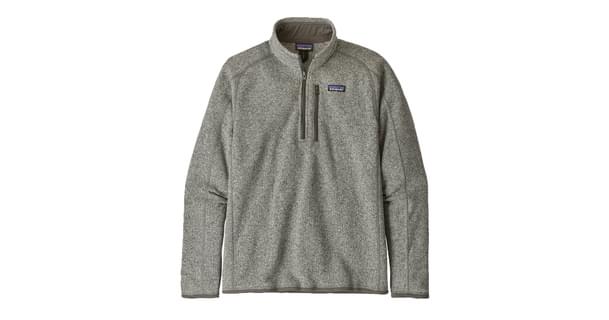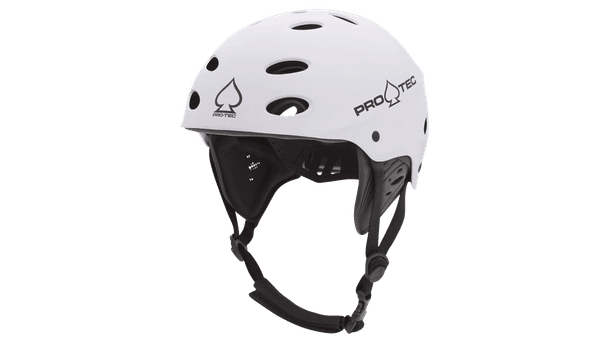- Home
- Gear & Reviews
- Gas Pedal/Footbar
Gas Pedal/Footbar
Gas Pedal/Footbar Description
The Gas Pedal/Footbar is a accessory brought to you by Onno. Read Gas Pedal/Footbar reviews or submit your own review to share with the paddling community. Check out a few other accessory recommendations below or explore all accessories to find the perfect one for you!
Onno
Gas Pedal/Footbar Reviews
Read reviews for the Gas Pedal/Footbar by Onno as submitted by your fellow paddlers. All of the reviews are created and written by paddlers like you, so be sure to submit your own review and be part of the community!
Better than pegs but not that much better
So a footbar on an aggressive sea kayak is kind of a game changer as it puts you pretty close to a surfski position giving you the ability to really throw your core behind your stroke. I'm amazed that no sea kayak makers, besides Rockpool, offer this an option. I'm surprised that only Onno and Expedition Kayaks offer a ruddered option as an add in.
I installed his footbar in my Taran16 and have 1 full summer on it. It replaced the stock footpegs on this ruddered boat. The install was very burdensome as nothing really lined up (as per his hand written instructions) and there isn't much wiggle room in his product to make it fit. It also interfered with my day hatch underneath the hull so after much sawing and hole drilling and anger and beers I got it installed. The stock setup makes the bar completely vertical so it's not comfortable with the angle of your feet. I had to shim the crap out of it to make it comfortable. Then came the rudder alignment. It connects directly to the toe peddles so there was a bunch of knot tweaking to make it right. To move it forward and back you have to redo the cable tension and balance it on each side. Not convenient at all.
So onto the review. The carbon feels comfortable on your bare feet which is nice. You have the ability to push real hard on the core of your feet and control the rudders with your toes, which is pretty sweet. The bar is way too flexy though, so it feels like it might break if I push it too hard. It also flexes top to bottom as well so you can't really get full power from your feet. The pegs are way more solid but your stuck bow-legged where you can do either/or with the bar. Overall it's been reliable but I did have it fall apart on a 30miler. Some of the bolts came loose and I was stuck w/o anything paddling home. I lock-tited everything when I put it back together and it's been fine.
So why did I give it 1 star? The product itself is probably about 3 starts. Onno is minus 5 stars. The reason I was sent this footbar was because Onno was duping PayPal into settling a dispute I had with Onno over a paddle I ordered. On the very last hour of my dispute Patrick sent PayPal a tracking #, which was supposed to be my $400 paddle. Instead it was this footbar that I expressed minor interesting via e-mails with Patrick. PayPal closed the case and any chance of me getting a refund. It's been 9 months and I have no hope of received the paddle I ordered from him. DO NOT order anything from Onno. There's a very small chance that you will receive what you order at all.
I purchased the ONNO footbar…
Installation was very quick and easy.
The following is from a note that I sent to Pat right after I installed and tested the footbar:
"To paraphrase the words of the immortal Dr. King, 'Free at last! Free at last! Thank God almighty, I'm (at least my knees and thighs are) free at last!' I installed the footbar on the Keepers (for now, as I just got the Yakimas and could not wait) pegs and rails, and tried out the set-up today. The foobar must be the single biggest improvement I could make to my kayak. I am getting a lot more torso rotation and power in my stroke, and am traveling faster in the water. Thanks for making a great product and the quick delivery. My legs to do not get cramped as the did previously since I can move my feet to various positions."
In my opinion, every touring kayak should come standard with a footbar/board as they are much more comfortable than footpegs.
When I purchased my WSBS…
I've paddled several boats with tiller-bar steering systems, and I've always thought they leave a lot to be desired. Most racing boats are narrow, and with my wide feet I don't have much room to maneuver a tiller bar - especially when the weather turns cold and I start wearing my river boots. I also don't care for the need to move my feet when I'm pushing hard in a race. I am used to gas-pedal systems in my sea kayaks, and it feels far more natural to me in my racing boat as well.
Pat's pedal system is well engineered, beautifully made, and very solid, with something of a custom touch. The rails on the Thunderbolt taper in as they go forward on the inside of the hull, so Pat asked me to provide hole-to-hole measurements at my foot bar location to provide him with hole drilling locations on his unit. The holes have a loose enough fit that the unit can move a few holes forward or backward to get the distance set correctly.
The Onno rudder pedal/foot board system drops in place, but it's still a challenge to get it into the hull of the Thunderbolt. The T-bolt hull is small enough that the system takes up most of the room, so it takes a little creativity to get to the bolts and wing nuts used to install the system onto the rails (the holes are on the cross bar, behind the foot board). It's not a system I would move around if it's not necessary, but I was pleased that it matched up well with the stock hardware. The small foot area of the T-bolt presented me with one other small challenge - the pedals wanted to scrape the hull as they moved back and forth. A little filing on the edge of the pedals took care of that situation.
As it comes, the foot pedals on the system are held in place by the tension of the rudder cables, but they can flop towards the cockpit when your feet aren't against the pedals. To keep the pedals in position, I attached one end of a small bungee cord to the top of each pedal and attached the loose end of each cord to the forward most hole in each respective side rail. This worked quite well, keeping the pedals taught against the rudder cables to keep them in position. I joined my rudder cables to the cords supplied with the Onno rudder pedal system by means of cord ratchets, making pedal/rudder adjustments extremely easy, even on the fly.
After installing the Onno foot pedal unit (and P-41 rudder), my boat was a whole new animal. It became easy to guide with my toes while at the same time delivering maximum power to the foot board with my legs, allowing me to focus on performance instead of trying to tame the boat. I'm very pleased with the Onno system.
I installed the gas…
Installation instructions are very clear and simple. I can now paddle with legs centered. The surface is grippy, but still looks smooth and has that cool carbon look. With size 9 shoes, I feel like there is a good balance between the lower fixed bar where I push, and the upper gas pedal where I steer. The system is simple and strong. It worked fine in the choppy windy conditions in last weekend's Mayors Cup in NYC.
As the fairly new owner of a…
Enter Pat at Onnopaddles. I had purchased a seat from him for my QCC, and was incredibly impressed with his enthusiasm, professionalism, and design and building expertise. His reputation is well-noted on these boards and in the paddling world at large, and for good reason-what he makes works, and he spends the time with his customers to assure that it does.
Purchased the carbon fiber gas pedal/footbrace system from him and installed it in the EFT. The wide, flat carbon footbrace is a thing of beauty, and superbly executed-the matching gas pedals for rudder actuation pivot easily on hinges at the top and incorporate a series of rudder line holes that secure the kevlar cord, making adjustments in line tension and pedal position a snap. Each pedal adjusts individually to the rudder, and there is no springback system-line tension provides this. The carbon surface has a matte finish that encourages a secure foot position even when wet, unlike the slippery metal footbrace that came stock. The width of the brace allows an extremely positive and solid platform to push from, as well as a multitude of foot positions. Possibly the most positive aspect of this design is that it is extremely easy to actuate the rudder from any position on the footbrace-the stock setup required you slide your toes in to actuate-with this one you can place your legs wherever you'd like and still get to the controls. I look forward to trying the boat out now in some real conditions, as I'm sure this benefit will be particularly valuable in situations where you might need to brace against the coaming with your knees and work the rudder at the same time, surfing, for example.
Set up was fairly straightforward. Pat took measurements provided and drilled the carbon brackets for the brace position I specified, allowing for proper leg length. I modified the brackets somewhat, drilling additional holes, and slotting them out using a Dremel routing bit; allowing a range of adjustability in the event someone else borrows the boat, or the unlikely event that I sell it. If the position were to be changed, line tension and pedal position would have to readjusted; an easy enough task with the cable system used on the pedals. The brackets each secure to the footbrace using four stainless bolts and nylon locking nuts-very strong and solid. The entire setup 'drops in' to the stock drilled 'L' brackets glassed to the hull, using the two bolts and wingnuts provided with the stock footbar. Simple.
Pat uses kevlar cord from the pedals. For ease of hookup without swapping out lengths of line and changing over the entire cable system, I mated the stainless cable from the stock rudder to the cord using stainless thimbles and Brummel clips for quick disconnect, in case I ever need to work on the system or replace part of the line. The new mounting has the cable sit further out from the sides of the hull than the stock tiller bar arrangement, and after some thought (and recommendations from Pat), I settled upon a stainless eyestrap cable guide with a length of pvc tubing hot flared to a bell shape on both ends to smoothly guide the cable and prevent fraying-this bolted to the very last hole closest to the cockpit on the 'L' channel, and the cable/line travels smoothly slightly away from the hull contours. Recently I sourced out simple Spinlock guides that bolt with a single mount from one sailing accessory manufacturer that would do the same without additional fabrication. Note that this is not necessary-I simply preferred to see the line follow the contours of the hull as closely as possible.
Now for the good part: Paddling the boat has always been sheer joy-it's light, fast, and responsive (although the addition of a deeper rudder is I think needed-hmmm...P-41...). With the footbrace installed, I can pump my legs from any position on the footbrace and still easily toe the gas pedals for minute adjustments on the rudder. In buoy turns, a simple push swings the rudder through its range of motion, again, easily actuated from anywhere on the brace. It has all the ease of usage of systems like Toe Pilots with the added benefits of simplicity of design, strength and light weight of materials, AND the fact that you are no longer locked in to a splay legged stance (Sciatica...Sciatica), or toe wrestling a wooden peg. Surf ski paddlers will find this system comfortable and familiar, and all will find it intuitive-allowing you to focus on stroke and torso rotation from any bracing position on the bar. Well done Pat; he shoots, he scores yet again!




